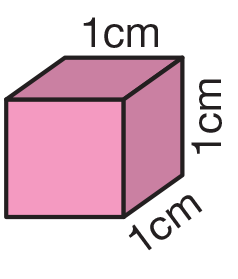Student pairs use connecting cubes to build models of classroom objects then estimate the volume of the objects by finding the number of cubes in their models. They compare the volume of the models to determine if their estimates are reasonable.
Content in this Lesson
-
Measuring and estimating volume by building models and counting cubic
units [E3]. - Developing visualization and spatial reasoning skills [E6].
- Justifying a solution using visual and spatial reasoning [E6].
- Using geometric modeling to solve problems.
- Using labels [MPE6].
Assessment in This Lesson
| Assessment | Expectation Assessed | Math Practices Expectation Assessed |
|---|---|---|
|
Cube Models with Feedback Box Student Activity Book Pages 433–434 |
|
|


















